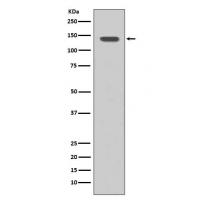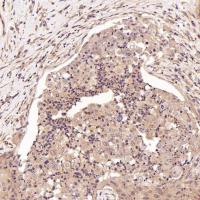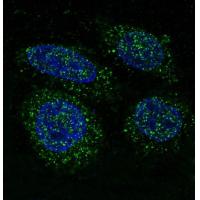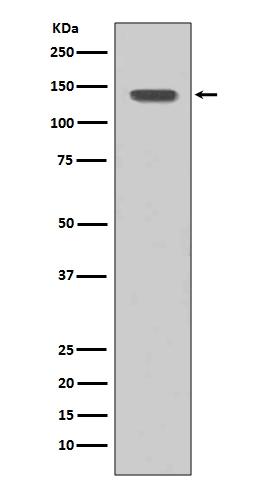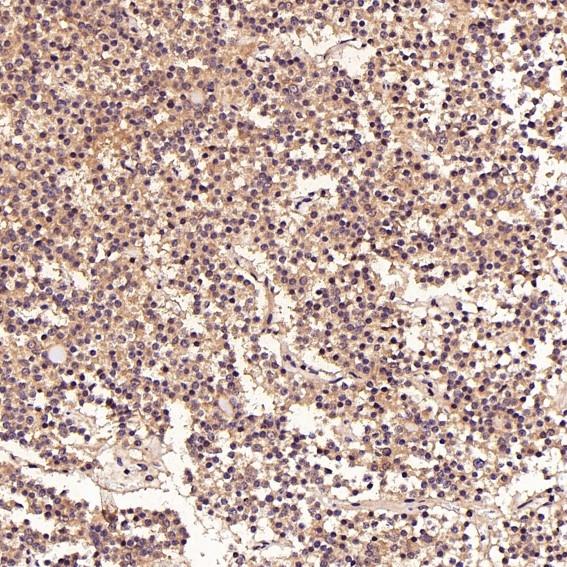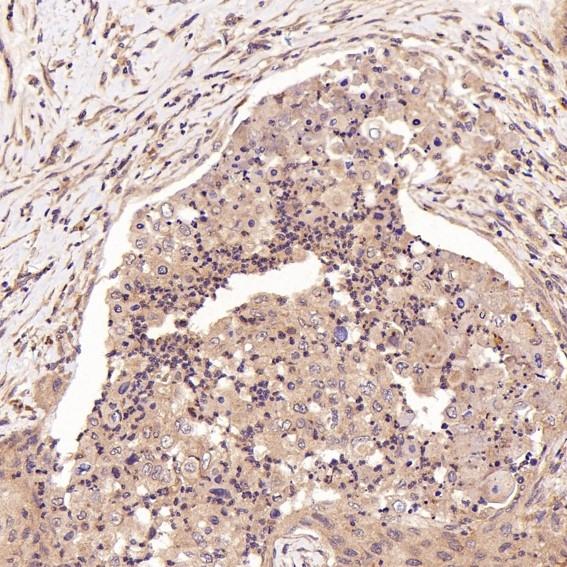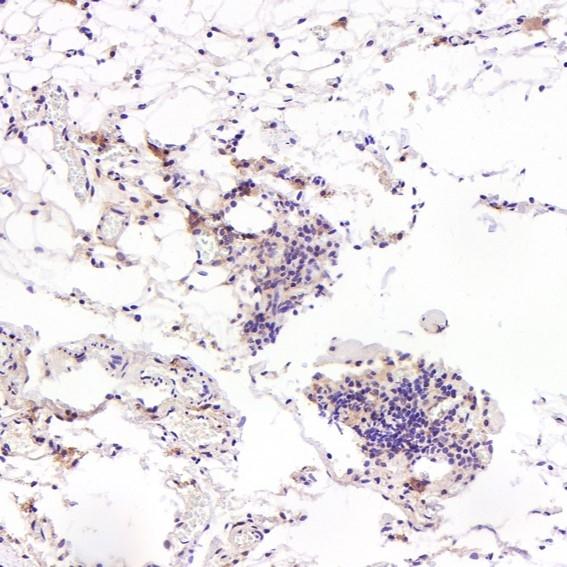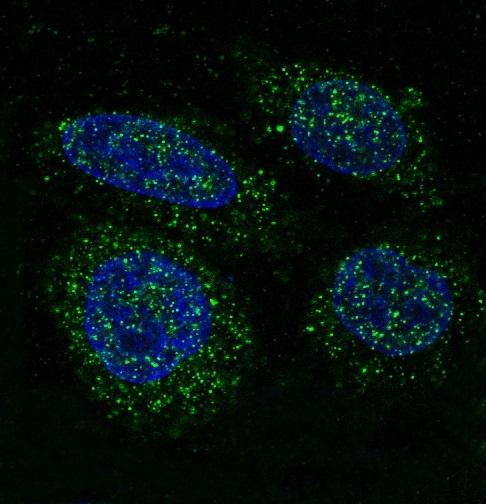- Product NameFGFR1 Rabbit mAb
- Clone No.SD08-25
- PurificationAffinity-chromatography
- ApplicationsWB;IHC;ICC/IF
- Species ReactivityHu
- Immunogen TypePeptide
- Immunogen DescriptionA synthesized peptide derived from human FGFR1
- Alternative Names Basic fibroblast growth factor receptor 1 antibody bFGF-R-1 antibody BFGFR antibody CD331 antibody CEK antibody FGFBR antibody FGFR 1 antibody FGFR-1 antibody FGFR1 antibody FGFR1/PLAG1 fusion antibody FGFR1_HUMAN antibody fibroblast growth factor receptor 1 antibody FLG antibody FLT-2 antibody FLT2 antibody Fms-like gene antibody Fms-like tyrosine kinase 2 antibody fms-related tyrosine kinase 2 antibody HBGFR antibody heparin-binding growth factor receptor antibody HH2 antibody HRTFDS antibody hydroxyaryl-protein kinase antibody KAL2 antibody N-SAM antibody OGD antibody Proto-oncogene c-Fgr antibody
- Accession No. Swiss-Prot#:P11362
- UniprotP11362
- Gene ID2260;
- Calculated MW 92 kDa
- SDS-PAGE MW 120, 140 kDa
- Concentration 2mg/ml
- Formulation Rabbit IgG in 10mM phosphate buffered saline , pH 7.4, 150mM sodium chloride, 0.05% BSA, 0.02% sodium azide and 50% glycerol.
- Storage Store at +4°C for short term. Store at -20°C for long term. Avoid freeze/thaw cycle.

